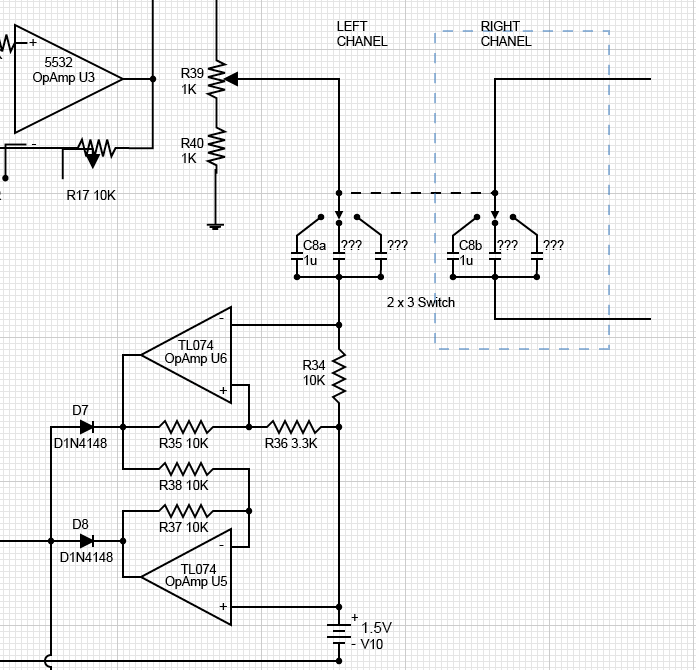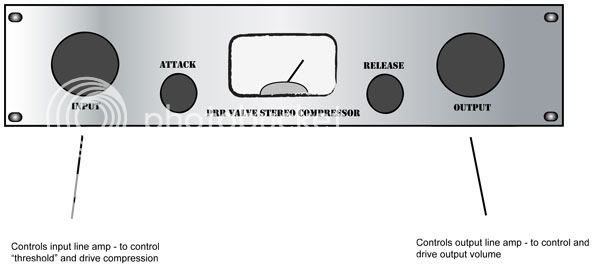Matthew Jacobs
Well-known member
Thanks for the quick response and advise
Of course, what was I thinking.... :'(
With regards to the stereo link, I like the option on one of my units to unlink the stereo channel and have different attack/release settings for dual mono tracking, but still have the option for stereo linking the sidechains.
I'll update the schematic with stepped switches for attack / release based on Kents values.
I think R17 as a trim is a good idea as it allows you to fine tune the gain between the 2 channel and maybe compensate for tolerance in R39, especially if its dual. Sleeper said he used a trim on R17 cause he needed more gain due to his choice of interstage TX. I know it will make setting up more complicated, but is a trim on R17 a good idea or is it just overkill?
The meter section still sounds confusing, it may be better to leave that to individual settings or maybe completely loose the meter altogether and just use our ears... ;D
I was thinking of leaving R39 inside the case, and adjust compression with the input attenuator. That's why having enough input drive is important for me.
It sounds like the choice of iron play a major role in how this thing sounds. I guess now, for me anyway, my concern is which transformers to get.
Thanks for all your help.
J
bluebird said:The 1M resistor is not necessary. Don't put the caps there either. they will block the DC going to the tube grids. the High Pass filter caps should go where C8 is.
Of course, what was I thinking.... :'(
Right, thanksSleeper said:First, I'd do what the Bird says. especially with regards to the sidechain and that part where it feeds back into the grids.
With regards to the stereo link, I like the option on one of my units to unlink the stereo channel and have different attack/release settings for dual mono tracking, but still have the option for stereo linking the sidechains.
I'll update the schematic with stepped switches for attack / release based on Kents values.
I think R17 as a trim is a good idea as it allows you to fine tune the gain between the 2 channel and maybe compensate for tolerance in R39, especially if its dual. Sleeper said he used a trim on R17 cause he needed more gain due to his choice of interstage TX. I know it will make setting up more complicated, but is a trim on R17 a good idea or is it just overkill?
The meter section still sounds confusing, it may be better to leave that to individual settings or maybe completely loose the meter altogether and just use our ears... ;D
I was thinking of leaving R39 inside the case, and adjust compression with the input attenuator. That's why having enough input drive is important for me.
It sounds like the choice of iron play a major role in how this thing sounds. I guess now, for me anyway, my concern is which transformers to get.
Thanks for all your help.
J

















![Soldering Iron Kit, 120W LED Digital Advanced Solder Iron Soldering Gun kit, 110V Welding Tools, Smart Temperature Control [356℉-932℉], Extra 5pcs Tips, Auto Sleep, Temp Calibration, Orange](https://m.media-amazon.com/images/I/51sFKu9SdeL._SL500_.jpg)
















